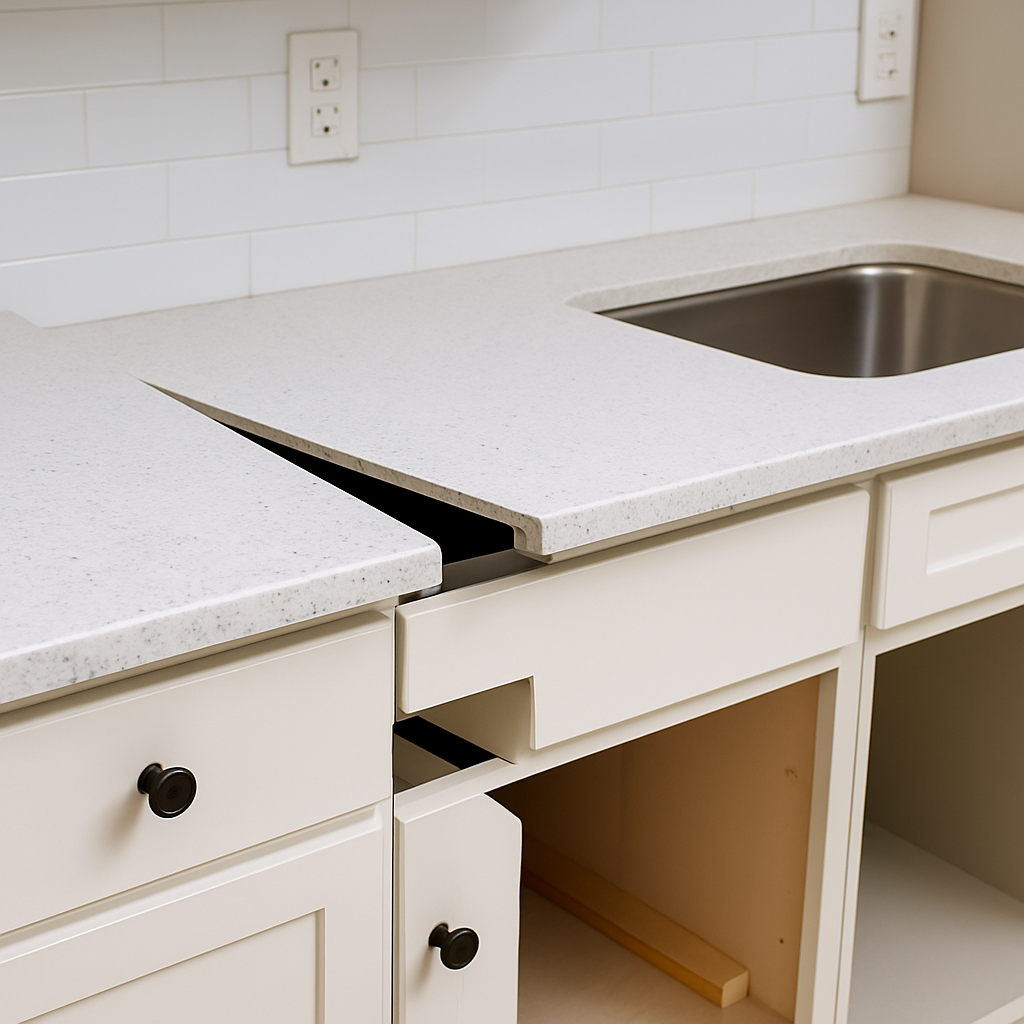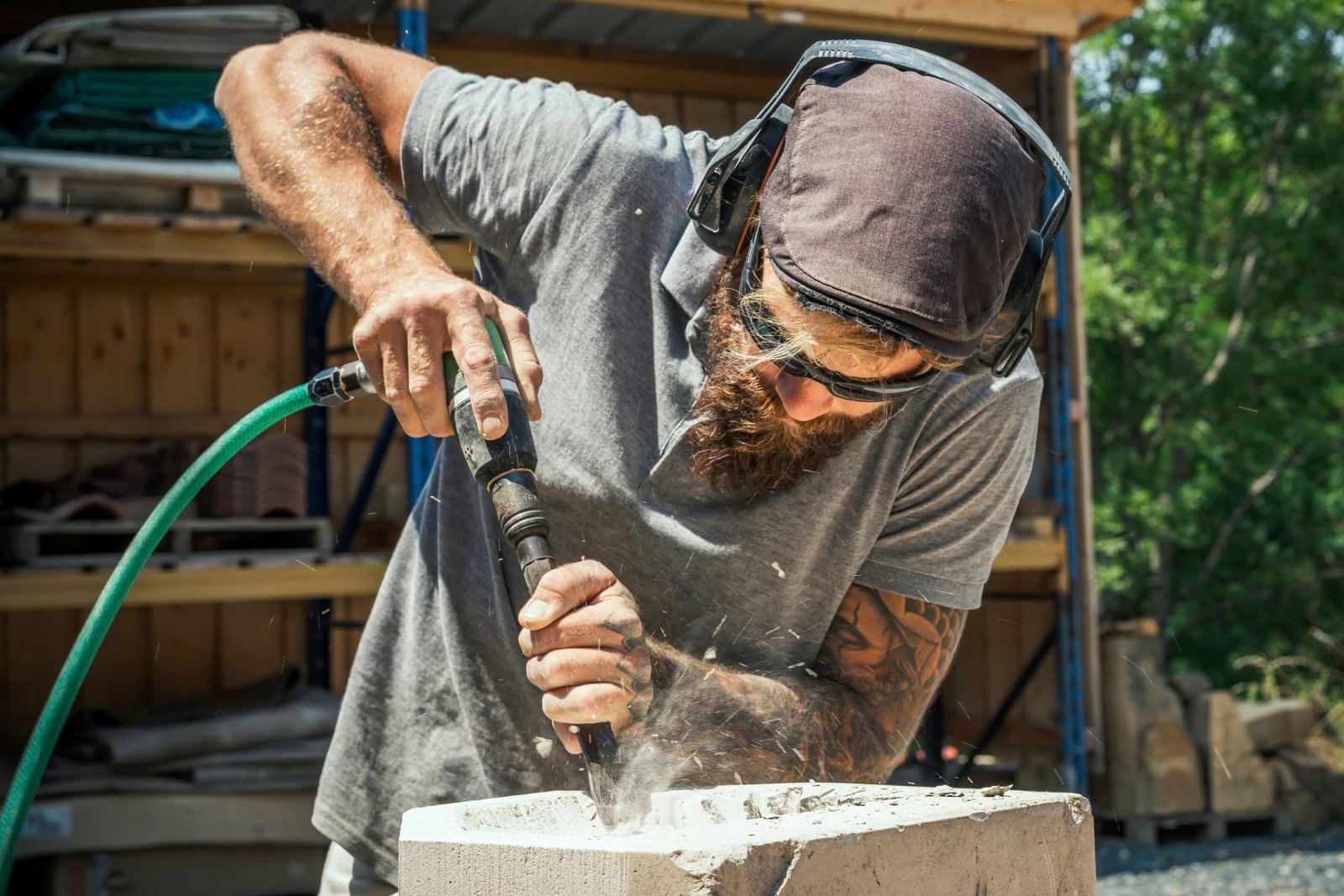
A high-quality countertop installation can transform a kitchen into a functional and beautiful space.
A high-quality countertop installation can transform a kitchen into a functional and beautiful space. However, even small mistakes during installation can lead to costly repairs, reduced durability, and disappointing results. Understanding the most common issues that arise during kitchen countertop installation can help you avoid them and ensure your investment stands the test of time.
In this article, we’ll walk through the most frequent problems seen in granite countertop installation, quartz countertop installation, and more—and show you how to prevent them.

Why Countertop Installation Quality Matters
Your kitchen countertops endure daily use, from meal prep to cleaning to entertaining. Poor installation can:
- Shorten the lifespan of your surfaces
- Lead to expensive countertop repair or early countertop replacement
- Increase overall countertop installation cost due to corrections
- Diminish property value
Want to protect your investment after installation? Learn How to Maintain Your Countertop Installation.
1. Uneven or Poorly Leveled Countertops
One of the most common problems during countertop installation is uneven leveling. If the base cabinets are not perfectly level, the countertop won’t sit properly, leading to:
- Gaps between cabinets and the slab
- Cracks in stone materials like granite
- Poor water drainage on surfaces
How to prevent it:
Always level and reinforce cabinets before installation. Use laser levels and shims as needed during kitchen countertop fitting.
2. Visible and Uneven Seams
In multi-piece countertop layouts, seams are inevitable—but they should be barely noticeable. Poor seam placement or sloppy seam bonding can ruin the look of an otherwise beautiful installation.
Common causes:
- Bad templating measurements
- Mismatched slab patterns
- Inadequate adhesive and clamping during installation
Best practices:
Professional installers use seam setters and color-matched epoxy to create tight, nearly invisible joints—especially critical in granite countertops installed or bold-patterned quartz slabs.
3. Cracks During or After Installation
Cracking often results from:
- Improper handling during transport
- Stress points created by improper support
- Over-tightened fasteners around sink or cooktop cutouts
Granite and quartz are strong but not flexible; without proper slab support and care, cracks can easily form around cutouts or weak points.
Tip:
Ensure the installer uses vacuum lifters and provides sufficient substrate reinforcement, especially under thin areas or heavy appliances.
4. Poor Adhesion and Securing
Countertops must be securely bonded to the cabinets beneath them. Inadequate adhesive application can lead to:
- Shifting or movement over time
- Stress cracks
- Gaps that allow moisture infiltration
Solutions:
Use high-grade adhesives appropriate for the material (e.g., silicone for quartz, construction epoxy for granite). Apply evenly across all support surfaces.
5. Incorrect Sink or Cooktop Cutouts
Inaccurate cutouts for sinks, faucets, or cooktops can compromise structural integrity or create unsightly gaps.
Problems include:
- Chips around the cutout
- Misalignment with plumbing or fixtures
- Weak points that crack over time
How to avoid:
Cutouts should be precisely templated and fabricated using the proper cutting tools. For a full equipment checklist, check out What Are the Best Tips for Countertop Installation?.
6. Inadequate Support for Overhangs
Large overhangs—common in kitchen islands—require proper bracing. Unsupported overhangs may sag or break over time.
Support guidelines:
- Granite and quartz require supports if overhangs exceed 10–12 inches.
- Use steel brackets, corbels, or hidden supports under large spans.
7. Sealing Issues in Natural Stone
Natural stone countertops like granite are porous and need sealing to resist staining. Poor or skipped sealing leads to:
- Water stains
- Oil absorption
- Permanent discoloration
Tip:
Ensure granite or marble surfaces are properly sealed right after installation and resealed annually.
8. Color Mismatches Between Slabs
When installing multi-slab projects, inconsistencies in stone coloration can occur if slabs aren’t properly matched.
Why it happens:
- Natural stones have variations even within the same lot
- Poor selection or communication with the stone supplier
Solution:
Always choose slabs in person when possible and work with a reputable supplier who can help match multiple slabs for consistency.
9. Damage from Poor Handling
Materials like granite and quartz are heavy but brittle if mishandled. Cracks or chips can occur during delivery, transport, or on-site moving.
Prevention:
- Use proper A-frame transport racks
- Handle with vacuum lifters or clamp carriers
- Employ multiple team members for safe carrying
10. Rushed Installation Without Proper Curing
After the countertop is installed and seams are bonded, adhesives and sealants need time to cure.
Skipping curing steps can lead to:
- Weak bonding
- Gaps or shifting
- Early deterioration
Always allow full curing as per manufacturer recommendations before using the countertop.
Summary Table: Common Installation Problems & Solutions
| Problem | How to Avoid |
|---|---|
| Uneven leveling | Laser leveling & cabinet shimming |
| Visible seams | Seam setters + color-matched epoxy |
| Cracks around cutouts | Proper slab support & careful cutouts |
| Adhesion failures | Quality adhesives + even application |
| Poor cutouts | Accurate templating + right tools |
| Overhang sagging | Bracket supports for spans over 10″ |
| Stone sealing issues | Immediate and regular resealing |
| Color mismatches | Inspect slabs in person |
| Damage from handling | Use proper moving equipment |
| Premature use post-install | Allow full curing time |
Final Thoughts
Even with the best materials, a poor countertop installation can cause major headaches. Understanding these common pitfalls—and how to prevent them—will save you money, time, and frustration.
Whether you’re investing in granite countertops installed, a stylish quartz countertop installation, or planning a full kitchen countertop installation, working with experienced professionals who follow industry best practices is key to success.
Stay proactive, ask the right questions, and prioritize quality workmanship to ensure your beautiful new countertops perform well for decades.

